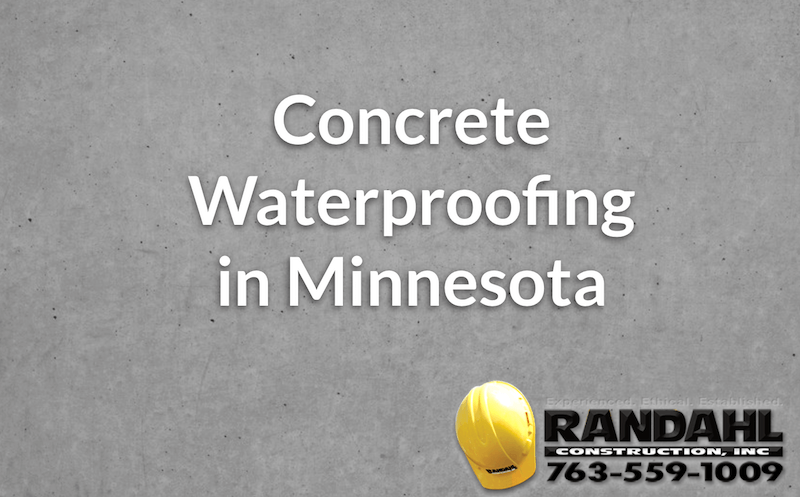Methods for Concrete Waterproofing in Minnesota
Water may be a necessity of life, but when it comes to a concrete building, water is the enemy. When the water seeps into the concrete and it freezes, the concrete expands. Over time, this can weaken its structure. Another problem is when the minerals in water leach out into the concrete and destroy its base. It can crack and lead to inventory loss or structural damage of the building. Either way, it’s going to be costly. Prevent this type of damage with concrete waterproofing. Many types of waterproofing can be applied to existing structures. Learn more about what is available.
Repair the Damaged Concrete
Before your business goes to expense of concrete waterproofing, the building may need to be repaired before moving forward. There are many different techniques that will re-strengthen the concrete and prevent further damage. What is used will depend on the extent of the damage and what caused it. Holes can be filled. Cracks can be repaired. There are products which halt the growth of bacteria or mildew within the concrete. Once it’s back to its original condition, you can move forward with protection.
Sheet Membranes
Pre-formed sheet membranes are just rolls of a self-adhesive waterproof barrier which are cut to the size of the concrete and applied once it is dried and cured. It does take a great deal of labor, but the elastic properties of the material allows it to move as the concrete expands and contracts. The seams must be perfect, or water can seep into the concrete. These sheets will deteriorate and need to be replaced.
Bentonite Clay
Although bentonite clay is affordable, it has one big problem in commercial applications. There’s no way to check the integrity of the application. It can be applied to an existing structure. When water hits it, the bentonite expands and keeps out the moisture. It can be washed away by a heavy rainfall, and most commercial properties steer clear of its use.
Liquid-Applied Membranes
A liquid membrane is similar to a sheet membrane, except it is a liquid when applied, much like a coat of paint. It’s probably the most effective and reliable method of concrete waterproofing, and many brands come with extended warranties when applied by a professional. The coating must be applied to meet specifications of thickness to ensure its effectiveness. The big benefit of a liquid-applied membrane is that there are no seams.
Concrete Waterproofing in Minnesota
Commercial products must meet certain regulations when used in your commercial building. Choose a professional concrete company to apply the waterproofing product to ensure your building is properly protected throughout every season in the state. Make the investment in the building to keep water damage from damaging the structure of your site. The roof, the floors, and the walls are all vulnerable to water damage. It’s almost ironic. Choosing concrete to avoid fire damage, only to have to worry about water, which would put out the fire. Take care of the concrete in your commercial building. Whether it’s new construction or decades old, make sure it withstands the test of time by waterproofing the surfaces to prevent damage.

